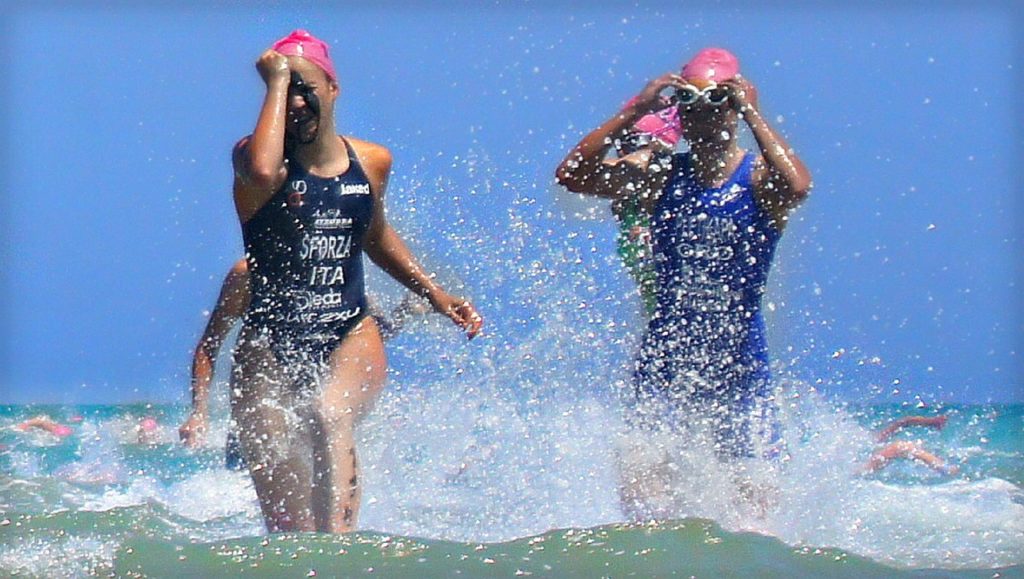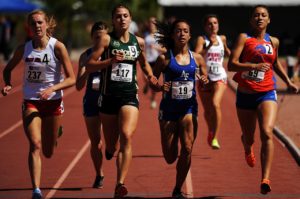- Calls to this hotline are currently being directed to Within Health or Eating Disorder Solutions
- Representatives are standing by 24/7 to help answer your questions
- All calls are confidential and HIPAA compliant
- There is no obligation or cost to call
- Eating Disorder Hope does not receive any commissions or fees dependent upon which provider you select
- Additional treatment providers are located on our directory or samhsa.gov
Certain Sports May Lead to an Increased Risk for Eating Disorders

Participating in sports can have a positive impact on some athletes, leading to improved confidence, better mental and physical health, and a sense of community. But for others, the stress of competitive sports and the pressure to look a certain way can put them at an increased risk for mental health concerns like eating disorders.
While about 1%-5% of the general population is at risk for developing an eating disorder such as anorexia or bulimia, that number can be as high as 30% for competitive athletes [1].
Sports That Present the Highest Risk
Eating disorders can occur in any sport. However, certain sports may increase an athlete’s risk for developing the disease.
According to Ron Thompson, Ph.D., a consultant psychologist to the Indiana University Athletic Department who specializes in the treatment of eating disorders, “lean” sports involve the highest risk for eating disorders [2].
Lean sports have certain weight class requirements where a low body weight is thought to give the athlete a competitive advantage. These sports can include gymnastics, diving, rowing, ballet, running, cycling, jockeying, wrestling, and martial arts.
Sports that have a certain aesthetic component may also increase an athlete’s risk for developing an eating disorder. Researchers have found that female athletes who compete in sports such as figure skating are at an especially high risk for developing eating disorders, according to the National Eating Disorder Information Centre (NEDIC) [3].
In lean and aesthetic-driven sports, being as light as possible is a common requirement. For sports, like couples figure skating, female athletes may feel pressured to be as small as possible to make tosses and other stunts easier.
Canadian pair skating champion and Olympic team silver medalist Kirsten Moore-Towers suffered from an eating disorder for years without anyone knowing. She believed that she was conditioned to think that she had to shrink herself down in order to succeed [1].
Struggles with Body Image
Female athletes, in particular, may struggle with body image after developing a more muscular figure that goes against what’s considered the socially desired norms of femininity.
Moore-Towers remembers hating her athletic body due to the constant expectation to be stick-thin. She began restricting her diet, dreading mealtime, and purging, and eventually developed bulimia [1].
Kelsey Johnston, outreach and education coordinator at NEDIC, suspects that a lack of diversity of bodies could contribute to body dissatisfaction among athletes. Johnston says, “The limited range in the weight and shape of these athletes may reinforce the thin ideal of attractiveness, and the perception that health and fitness are linked to thinness” [3].
When it comes to body image and sports, athletes who are required to wear more revealing uniforms may be at a higher risk for negative views of the body, which could potentially lead to eating disorder behaviors.
One study found that 45% of swimmers reported their swimsuit as a stressor [2]. Another study on volleyball players discovered that revealing uniforms negatively impacted the players’ body image [2].
While negative body image can have a role in the development of eating disorders, concerns about body image and food can be manifestations of a much deeper problem. For athletes, an eating disorder is often developed as a need to feel control.
The Pressure of Competing for Athletes
Oftentimes the traits that make a good athlete are the same traits that might increase a person’s risk for developing an eating disorder. Things like high self-expectations, perfectionism, competitiveness, and hyperactivity are common in successful competitive athletes [2]. However, these traits might also make them more susceptible to developing disordered eating habits.

It’s no secret that many competitive athletes are under immense pressure from coaches, teammates, and themselves. For many athletes, coaches may even encourage unhealthy weight loss through dieting, overtraining, and other harmful behaviors that are dismissed as traits for success.
U.S. national champion Rachael Flatt recalls her experience as a teenager going through puberty while trying to make a name for herself in the world of figure skating. Flatt says, “Before my first World Championships, I was told that I needed to drop 20 pounds in one week” [1].
Athletes like Flatt, who begin competing at a young age, may be more likely to develop an eating disorder at some point in their lives.
Eating Disorder Prevention for Athletes
When it comes to eating disorders, prompt treatment is essential in preventing severe complications like bone weakness, organ failure, and death. Understanding the signs of eating disorders in athletes is important in making sure that they receive the proper treatment.
Signs of an eating disorder in an athlete might include:
- Obsession over body weight
- Counting calories
- Restricting calorie intake
- Overexercising beyond the coach’s recommendations
- Menstrual irregularity in females
- Weakness and fatigue
- Decreased athletic performance
For athletes, an adequate diet is essential not only for performance, but for their overall health and well-being. If you or someone you know is struggling with eating disorder symptoms, help is available.
References:
[1] Bonds, F. (2020, November 9). The Inside Edge: TSN’s ‘Disorder’ brilliantly examines the prevalence of eating disorders in sport. USC Annenberg Media. http://www.uscannenbergmedia.com/2020/11/09/the-inside-edge-tsns-disorder-brilliantly-examines-the-prevalence-of-eating-disorders-in-sport/[2] Thompson, R. Mind, body, and sport: eating disorders. NCAA. https://www.ncaa.org/sport-science-institute/mind-body-and-sport-eating-disorders
[3] Stechyson, N. (2018, February 12). Figure skating’s dark history of eating disorders worries experts. Huffington Post. https://www.huffingtonpost.ca/2018/02/12/figure-skating-eating-disorders_a_23359385/
The opinions and views of our guest contributors are shared to provide a broad perspective of eating disorders. These are not necessarily the views of Eating Disorder Hope, but an effort to offer a discussion of various issues by different concerned individuals.
We at Eating Disorder Hope understand that eating disorders result from a combination of environmental and genetic factors. If you or a loved one are suffering from an eating disorder, please know that there is hope for you, and seek immediate professional help.
Published on March 31, 2021. Published on EatingDisorderHope.com
Reviewed & Approved on March 31, 2021, by Jacquelyn Ekern, MS, LPC
